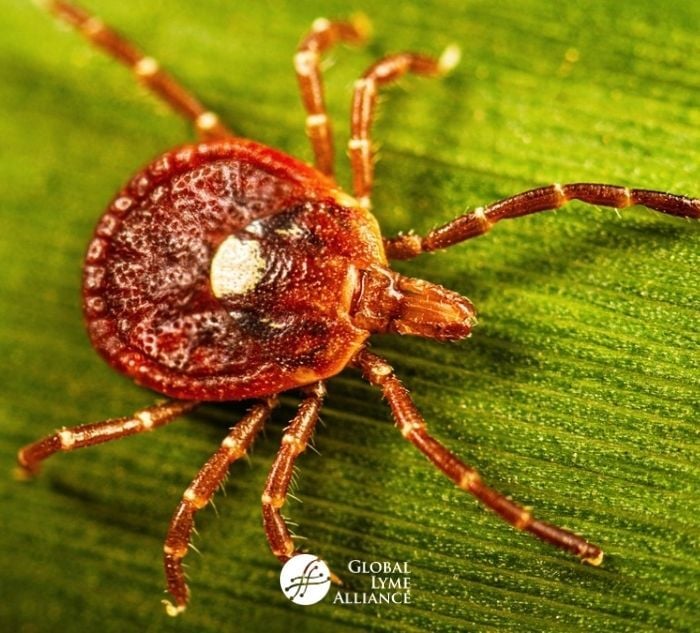
by Jennifer Crystal
I was a telling a date last night about my Lyme journey. He responded, “I read an article that said Lyme can be cured, but then I read another that said it can be chronic.”
“Yes,” I said. “Both are true.”
I explained that cases of Lyme that are diagnosed and treated right away can often be cured, but that cases like mine—which took eight years to diagnose—are much harder to treat. “And then there’s every case in between,” I told him. “Lyme is on a spectrum.”
A cursory internet search might yield information about extreme Lyme disease cases, or about cases easily cured, as well as conflicting information about the best way to treat the tick-borne illness. In our world of quick searches and click-bait headlines, we need to dig deeper to get to the truth of a matter. For Lyme, as for its many tick-borne co-infections, this means reading more than one article. It means checking reputable sources (like gla.org or ilads.org). It means talking to your Lyme Literate Medical Doctor, and even to patients who have suffered as you do.
Let me cite a few articles from reputable sources that don’t give a complete or accurate picture of Lyme. Last June, for example, a woman published an op-ed in the New York Times entitled “My Son Got Lyme Disease. He’s Totally Fine.” Someone reading that article, or even just its headline, might conclude, “Well if an article in the New York Times says Lyme is no big deal, there’s nothing to worry about.”
Here’s the conundrum though. The article was not patently false. It’s true that this one child was ultimately fine, because his Lyme was caught and treated quickly, and his symptoms didn’t persist beyond his two or three-week treatment. However, his one story does not speak for the 427,000 other people diagnosed just in the U.S. with Lyme each year. Every single one of those cases is different. Further research on Lyme disease would lead an assiduous reader to learn this fact.
Also last summer, a couple of lines from just one of the hundreds of articles I’ve written about Lyme were cherry-picked for the New York Magazine article, “Maybe It’s Lyme: What Happens When Illness Becomes an Identity?” Without ever speaking with me, the reporter curated a single-angle point of view that painted me as someone for whom, in her words, “Lyme is a state of being, a word that conveys your understanding of your lived experience.”
From that quote, a reader might assume that this reporter did her due diligence and checked her facts with me personally. In fact, she did no such thing, and her conclusion could not be farther from my truth. Anyone who’s read my articles in depth, or who has spoken with me, knows that I’ve worked very hard over many years to ensure that I am not defined by illness. My writing peels back the layers of the metaphorical onion to show, in excruciating detail, a lived experience that cannot be summed up in a few words.
To know the full truth requires reading more than an overview or hearing a news snippet. As my creative writing students share their personal stories in my course “Writing to Heal,” I see how basic assumptions are stripped away and core truths are revealed. I’m consistently reminded that you never really know what’s going on in someone’s life just by looking at them or hearing about their surface narrative. Individuals are complex in ways they themselves may not understand. And so with people as with information, we have to dig deeper.
The same is true for medical diagnoses. Some cases of Lyme, such as those that present a bull’s eye rash, are clear-cut. Most others, which show no rash, are not. But that doesn’t mean the patient isn’t sick. It means the doctor needs to dig deeper than basic blood work (since standard Lyme tests fail 50% of the time). It also means the patient must advocate for his or herself and pursue second, third, and sometimes tenth opinions, until they find a specialist who hears them out and works with them to pursue an accurate diagnosis.
In my case, the naturopathic physician I was seeing before I was diagnosed with Lyme, and when I was only being treated for my other chronic illness, Epstein-Barr virus, said to me, “It’s like a light has been shone in only one place. Now we need to take a flashlight into the dark.” When he did, he suspected Lyme, and sent me to a Lyme Literate Medical Doctor (LLMD). I am forever indebted to this naturopathic physician for his patience and insight.
I am also glad I was able to give my date last night a fuller understanding of the nuances of Lyme. As for whether we’re a match? I can’t yet say. That will require further research, too.
________________________
[i] Ducharme, Nicola
McFadzean. Lyme Brain. California: BioMed Publishing Group, LLC, 2016 (9-12).
Related Posts:
Feed Your Body to Fight Lyme
Living with Lyme Brain
Dealing With Brain Fog

Opinions expressed by contributors are their own.
Jennifer Crystal is a writer and educator in Boston. Her memoir about her medical journey is forthcoming. Contact her at lymewarriorjennifercrystal@gmail.com.

Jennifer Crystal
Writer
Opinions expressed by contributors are their own. Jennifer Crystal is a writer and educator in Boston. Her work has appeared in local and national publications including Harvard Health Publishing and The Boston Globe. As a GLA columnist for over six years, her work on GLA.org has received mention in publications such as The New Yorker, weatherchannel.com, CQ Researcher, and ProHealth.com. Jennifer is a patient advocate who has dealt with chronic illness, including Lyme and other tick-borne infections. Her memoir, One Tick Stopped the Clock, was published by Legacy Book Press in 2024. Ten percent of proceeds from the book will go to Global Lyme Alliance. Contact her via email below.






